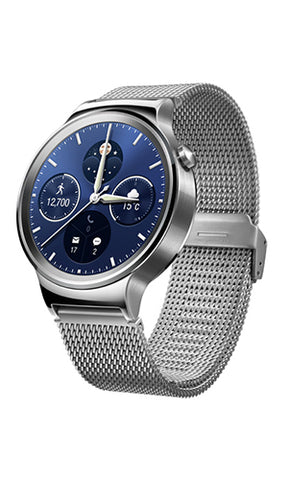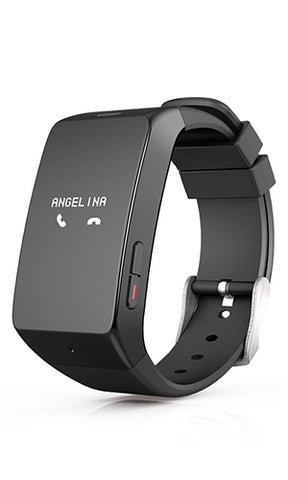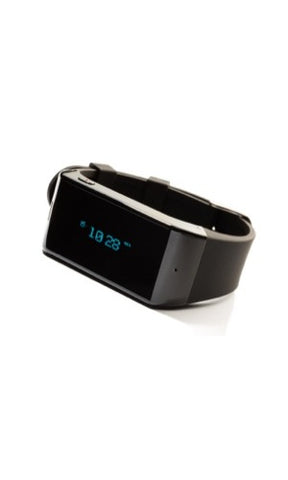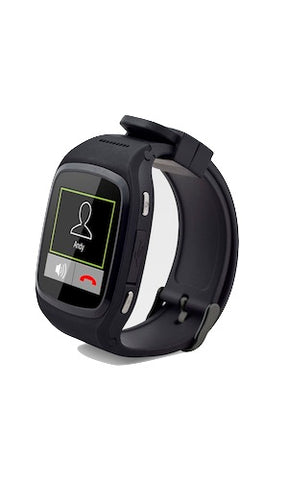The Death Watch: How the Apple Watch will move from fashion piece to healthcare lifeline
Written By
Zachary Reed Smith
While much of the initial conversation surrounding the Apple Watch focused on the company’s entrance into the fashion industry, the more enduring story centers around the Watch’s implications for healthcare. Rather than its aesthetics, it’s the device’s consolidation of health benefits that guarantees the smartwatch will remain in vogue.
Though the most obvious potential of the Watch lies in its ability to passively gather health information about its user — activity level and heart rate, for example — it is the Watch’s integration with the iPhone Health app that positions the flashy timepiece as a game-changing medical device.
Using Apple’s new HealthKit framework, developers of wearable sensors like glucose monitors and activity trackers are able to funnel their data to the Apple Health app, consolidating a user’s health information in a single easily accessed interface. In this way, Apple is building on the success of one of the first ‘wearables’: the MedicAlert bracelet.
A modern medical bracelet
Perhaps best known by millennials for their daytime infomercials, the MedicAlert details allergies, existing conditions, and other immediately pertinent information about the state of the wearer’s health. Were you to keel over, a responder would be able to immediately see that you are allergic to a certain drug without having to consult a complicated medical record or a bystander’s unreliable memory. By potentially providing immediate access to a patient’s entire medical history, Apple takes this MedicAlert concept several steps further.
In anticipation of HealthKit and the Health app, Apple partnered with electronic medical record giant Epic. According to iMedicalApps, Epic — a privately-held company whose whimsical Wisconsin campus puts most Silicon Valley compounds to shame — maintains over 50 percent of electronic patient medical records in the U.S. In response to increasing governmental pressure, Epic took steps in the last decade to make that information available to patients. Even so, few individuals choose to access their records on casual, regular basis. It’s too much of a hassle.
But suppose people did access their records faithfully. There is still too much information that escapes medical records like visits to clinics that do not use Epic, exercise routines, diet, blood glucose monitors, and, yes, heart rate.
A one-stop health-shop
Enter the union of the Apple Watch and the Health app. By absorbing your Epic health history and enriching it with your real-time health stats, the device serves as a comprehensive record of your health. Think of it as a one-stop health-shop for the quantified self.
By keeping patients records handy, so to speak, the barriers to accessing electronic health records are dramatically lowered. Patient health awareness (and health outcomes) will improve, in turn. While this “health hub” functionality is a part of the iPhone Health app packaged with iOS 8, Apple strategically synced Health’s September 2014 launch with the announcement of the Watch.
Like the MedicAlert bracelet, you may be taking your life into your hands whenever you take it off.
Contributing to worldwide research
Beyond making health information instantly available to you and your physician, Apple has taken one further step with HealthKit’s attendant “ResearchKit” framework, a set of tools that allow developers to create apps that collect de-identified medical data for research.
Upon opting into an app built with ResearchKit, a user’s health data (anonymous and aggregated) is made available to medical researchers around the world, increasing by an order of magnitude the scale of their standard sample size. With potentially millions of participants contributing hundreds of data points each, the possibility of groundbreaking medical research is considerable. For example, it could allow for new insights on breast cancer recovery time or the impact of environment on asthma sufferers. It’s an exciting development that captures the imagination. It’s also a brilliant marketing campaign: Do your part, wear an Apple Watch.
Looking ahead (and possibly not even too far), there is potential for this medical research to become predictive: As realtime and historical data about your health is perpetually, algorithmically, analyzed, certain conclusions about the future of your health could be drawn. Imagine receiving an ominous Push Notification: “In assessing your health data, you are predisposed to diabetes. Change your lifestyle immediately.” Or perhaps more urgently, “You are at risk of having a stroke. Call 911.”
Life or death
Suddenly, the Apple Watch is not about technology, not about fashion, not even about community service; it’s about life and death.
If these predictive developments come to pass (and why wouldn’t they?), one can imagine that the AppleWatch would no longer be thought of as a flashy fashion accessory or frivolous iPhone supplement, but as an existential imperative.
Like the MedicAlert bracelet before it, to not wear the Watch would be considered irresponsible. The marketing would ramp up, in turn. “Think different: Avoid death.” And death, from what I hear, doesn’t have a great user experience.
—
Zachary Reed Smith is director of user experience at CoherentRx, developers of point-of-care patient education apps in New York City.
Tags: apple, apple health, Featured Items, healthcare, HomePage Featured, Medical, smartwatch, Smartwatches




